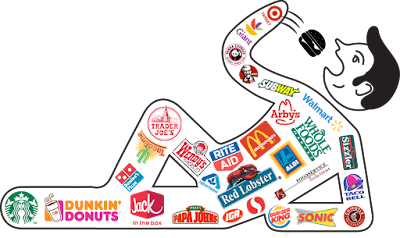The
U.S. labor force participation rate stands
at 63%. With only 63% of
consumers working meal time has moved to anytime according to Steven Johnson,
Grocerant Guru® at Tacoma, WA based Foodservice Solutions®.
Consumers are dynamic
not static and they are adapting to how things are today and are not trapped in
the past. They like, cash machines,
digital payments, food delivery and they want to eat meals and snacks all day
long according to Johnson.
The simple fact is consumers
these days are eating differently, eating in different places (in front of the 65
inch HDTV)
—than they used to. Gone are standard breakfast lunch and dinner dayparts. Today more and more consumers are simply
eating whenever they get hungry or are craving breakfast, lunch or dinner.
Grocery store service
delis continue to add menu options for all dayparts driving sales growth to
9.02% year over year garnering restaurant customers according to Johnson. According to the Technomic’s 2017 Retailer Meal
Solutions Consumer Trend Report, 80% of consumers
report purchasing prepared meals at least once a month, and more than
half—55%—eat prepared foods within an hour after purchase.
Snacking is also a
leading reason for consumers purchasing more prepared foods and supports the
notion that consumers are eating simply when they are hungry, not because
there’s a traditional timestamp involved. According to Technomic’s 2018 Snacking
Occasion Consumer Trend Report, 43% of consumers say the reason they
purchase a snack is because they’re hungry and it’s not time for a meal yet.
Afternoon snacking is the most common, with 75% of consumers saying they snack
then, compared to 26% who snack in the morning, 42% at night and 27% late
night.
Grocerant niche Ready-2-Eat
and Heat-N-Eat fresh prepared food is a solution for meal time that does not
require time to cook or do dishes. If
success leaves clues selling fresh prepared meals and meal components in new
non-traditional locations is a clue for all retailers. Are you looking for a new point of
distribution? Does your restaurant look
more like yesterday than tomorrow? Why?
Do your food
marketing ideations look more like yesterday than tomorrow? Interested in
learning how www.FoodserviceSolutions.us can edify your
retail food brand while creating a platform for consumer convenient
meal participation, differentiation and individualization? Email us at: Steve@FoodserviceSolutions.us or visit: www.FoodserviceSolutions.us for more
information.































